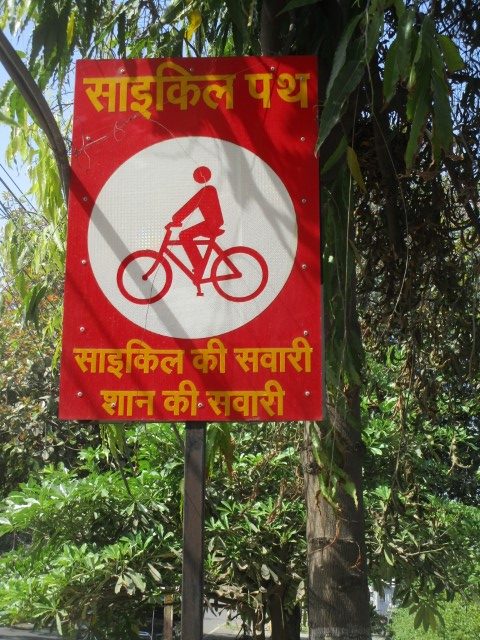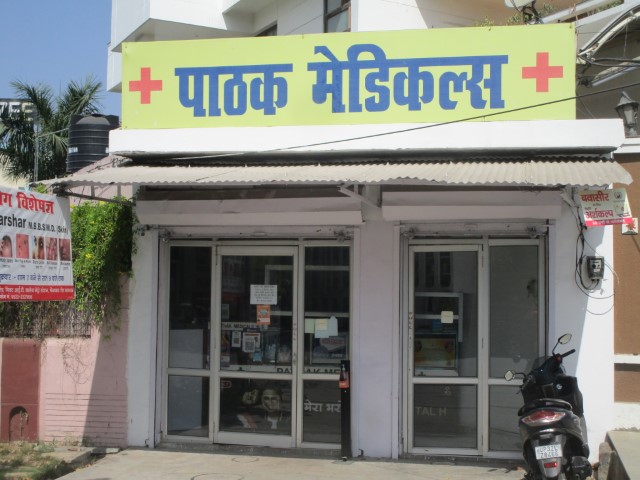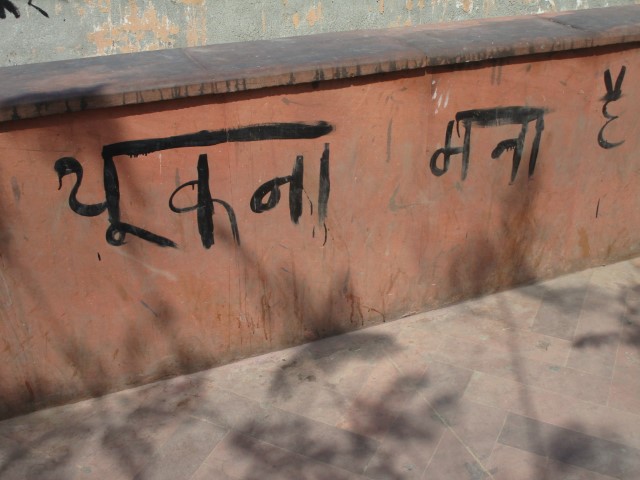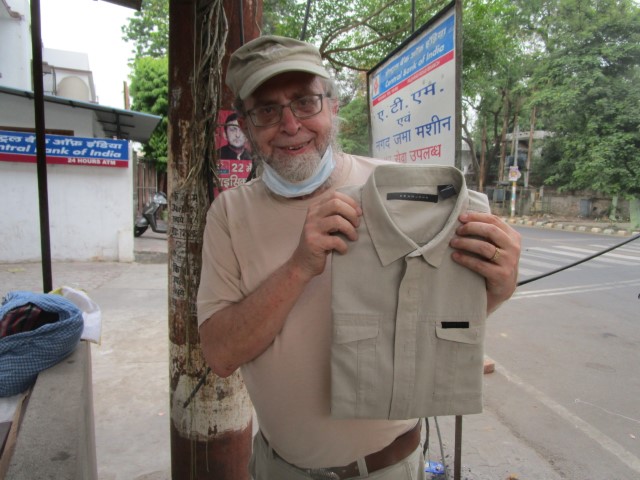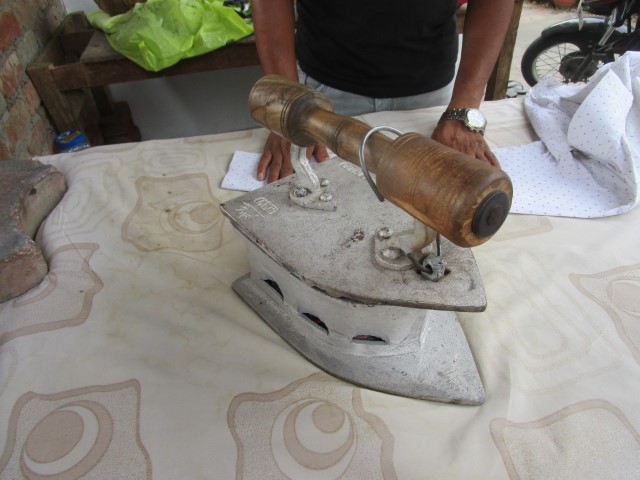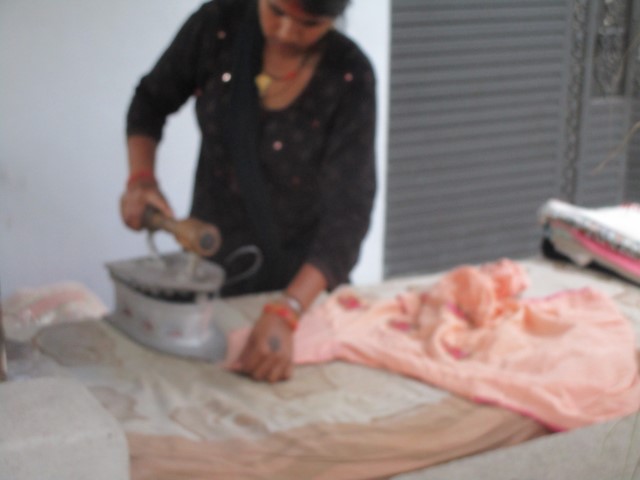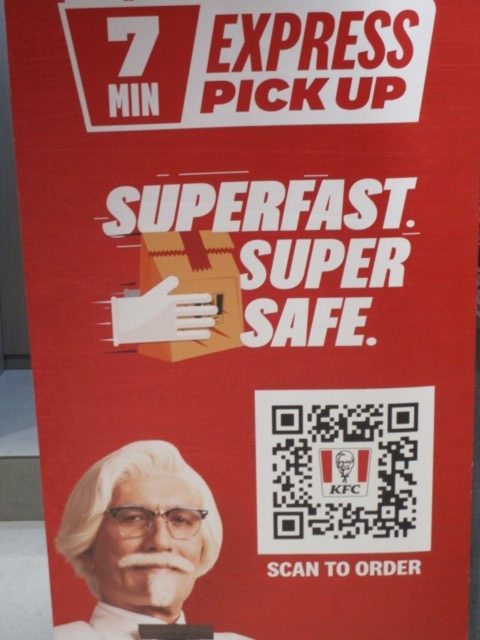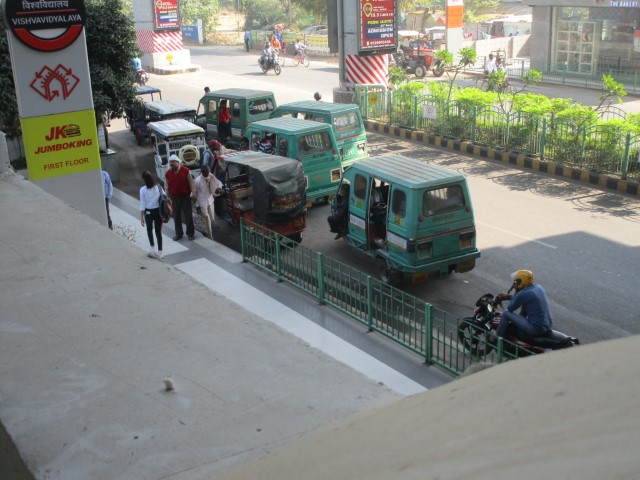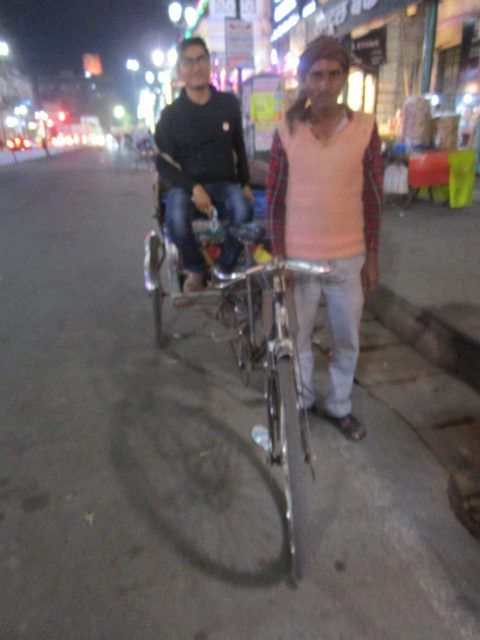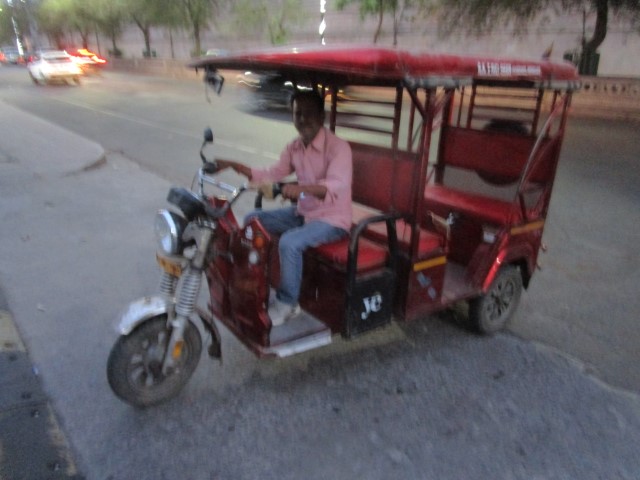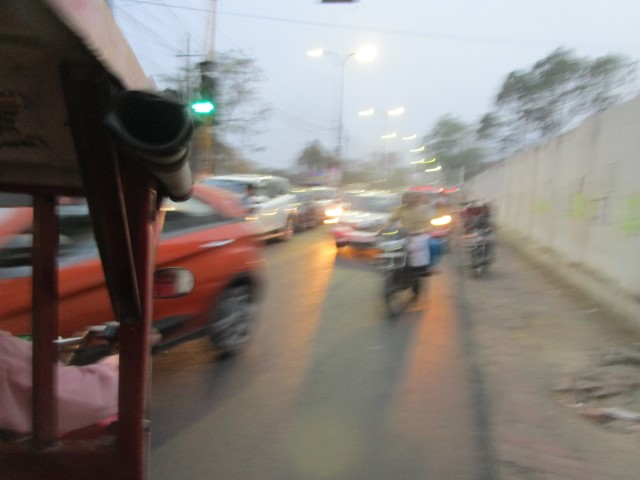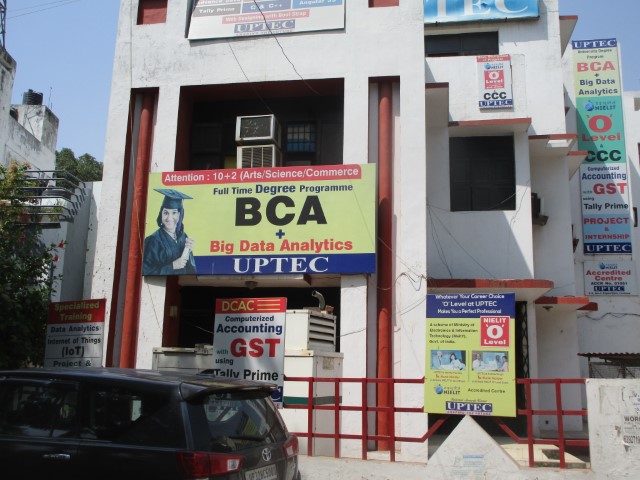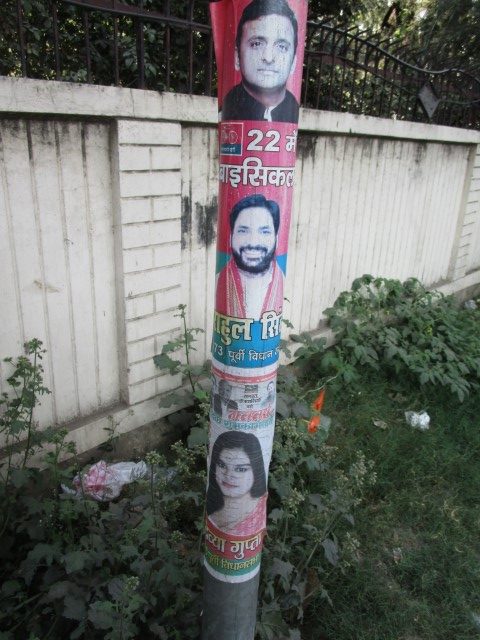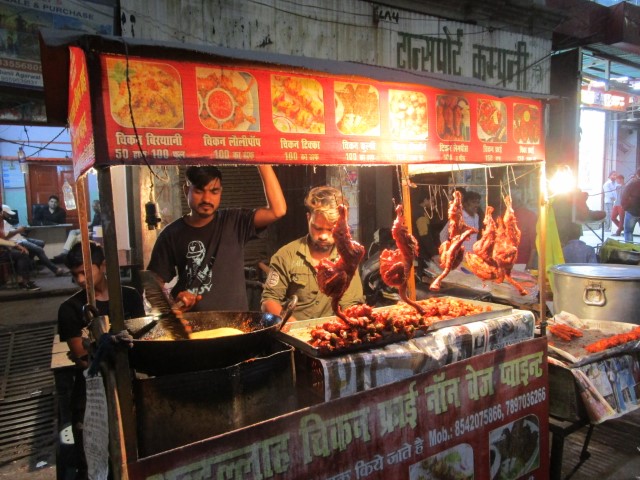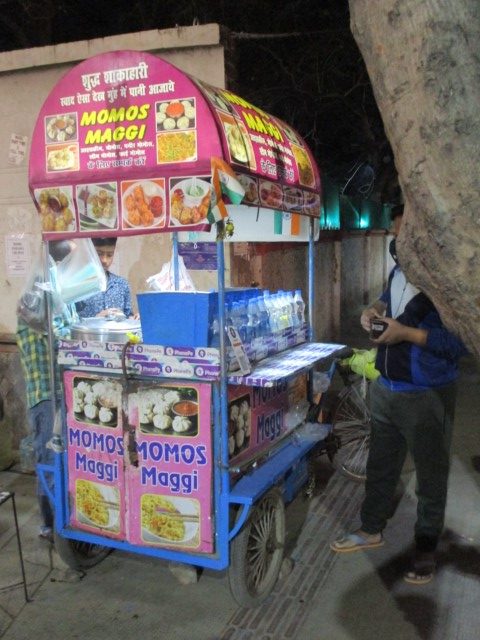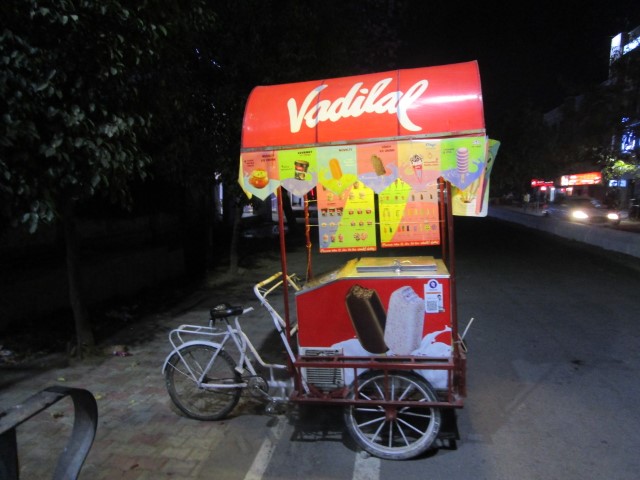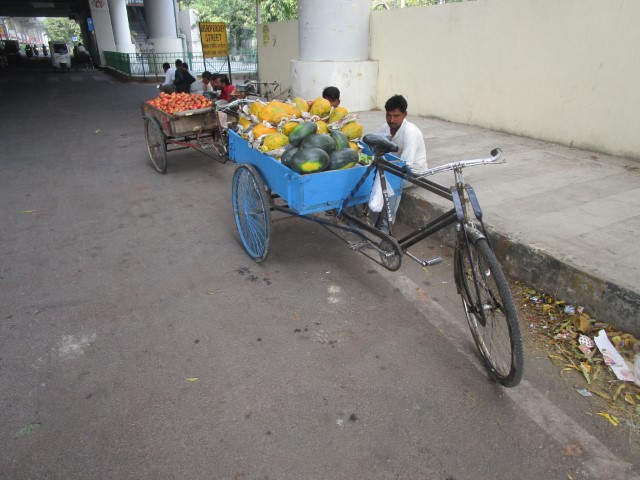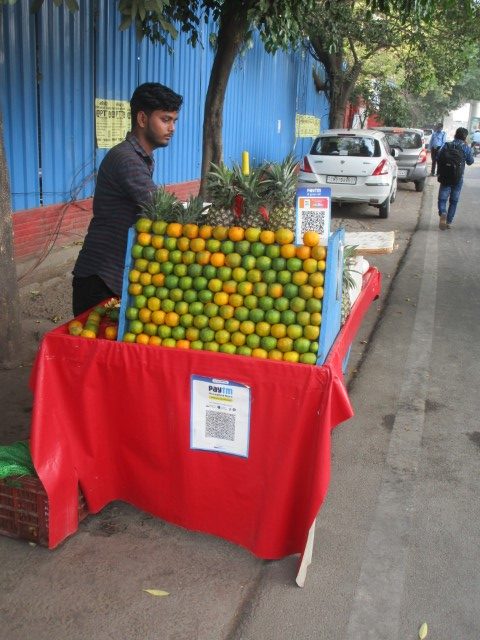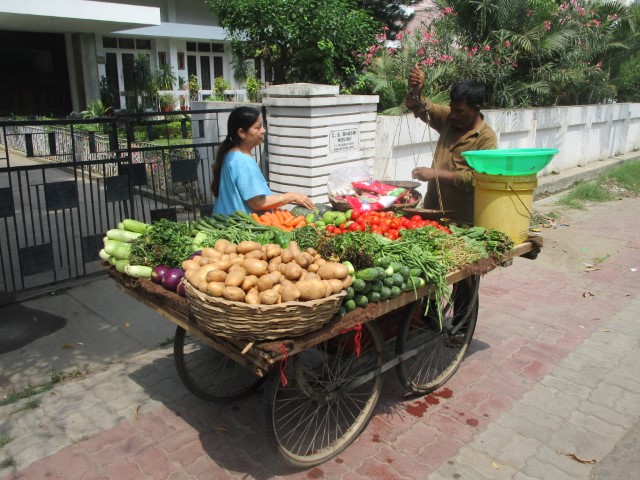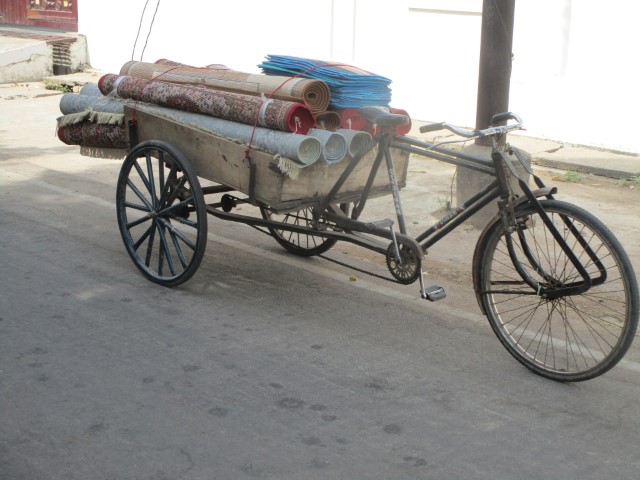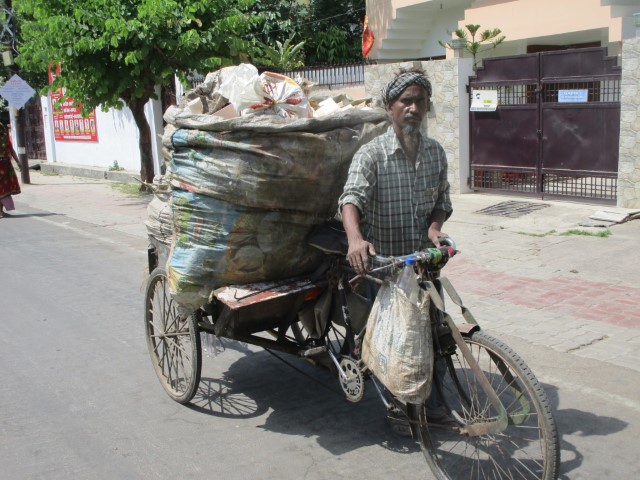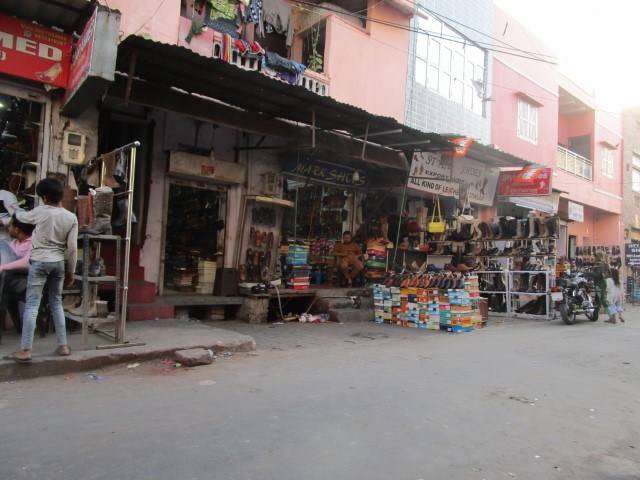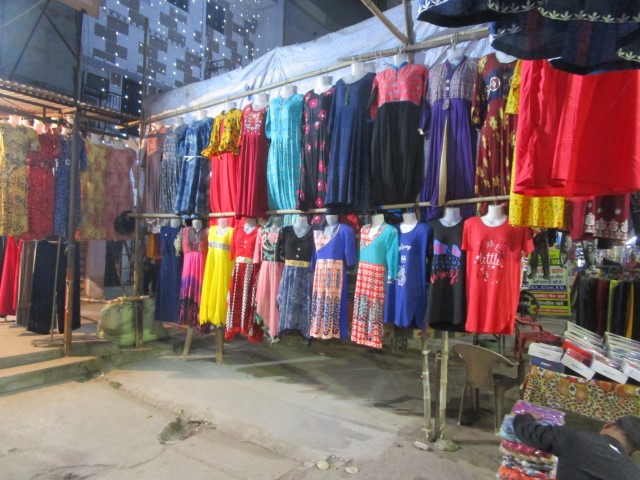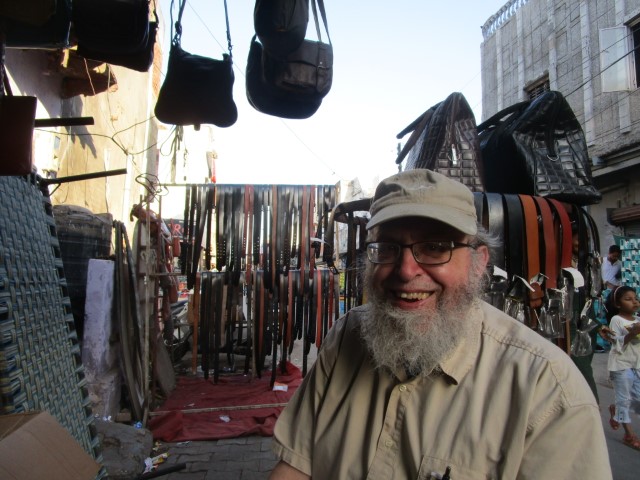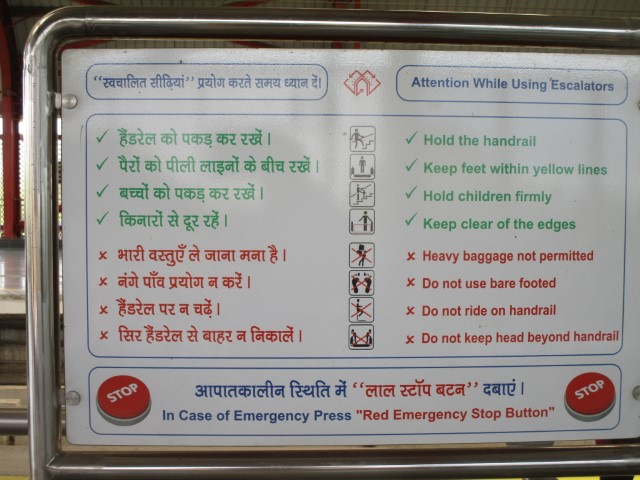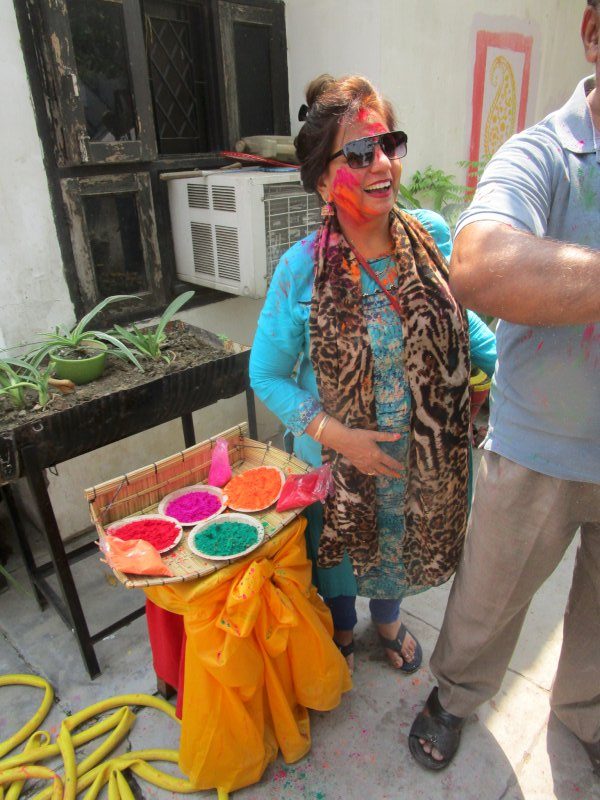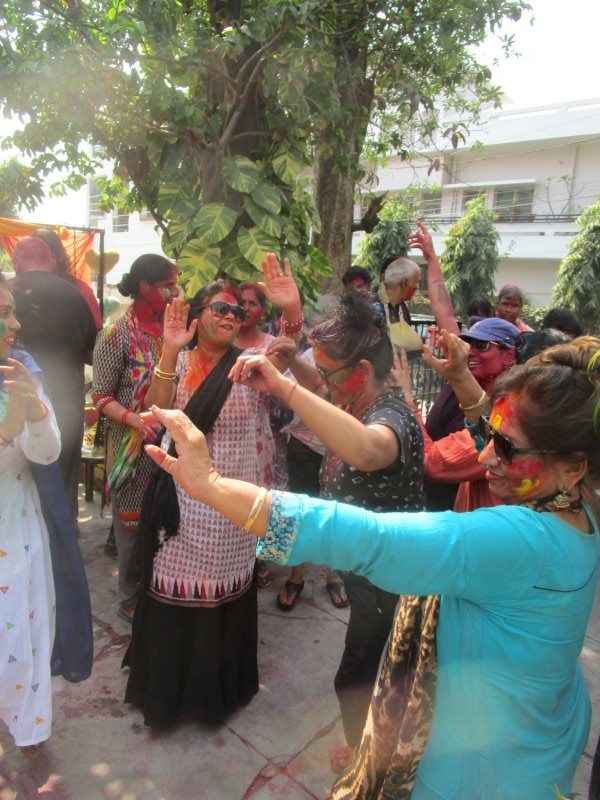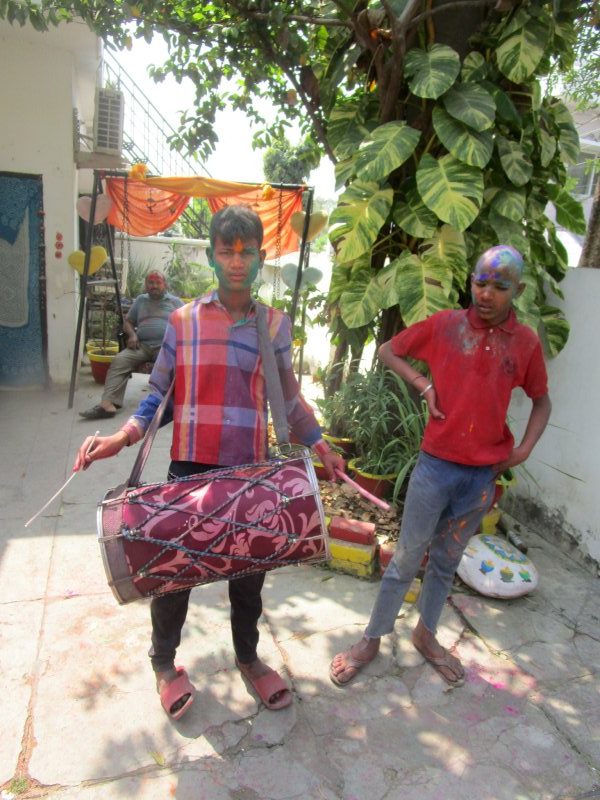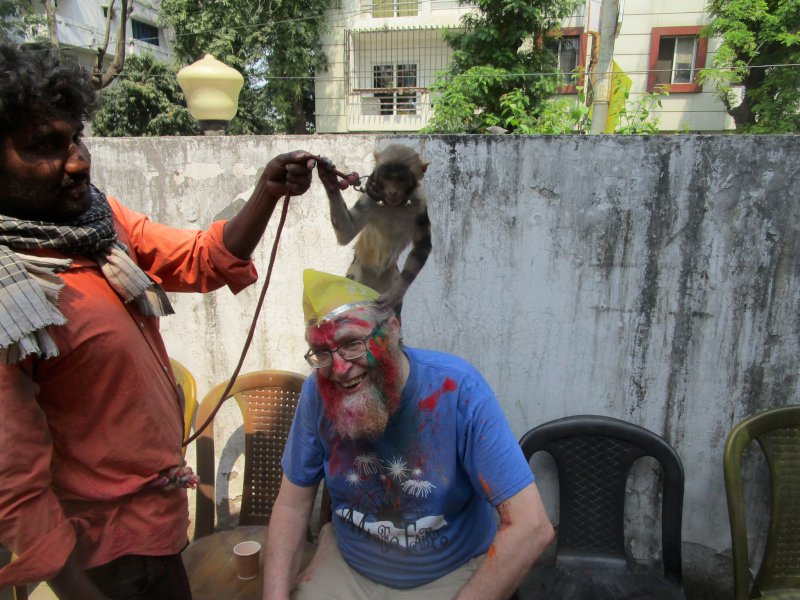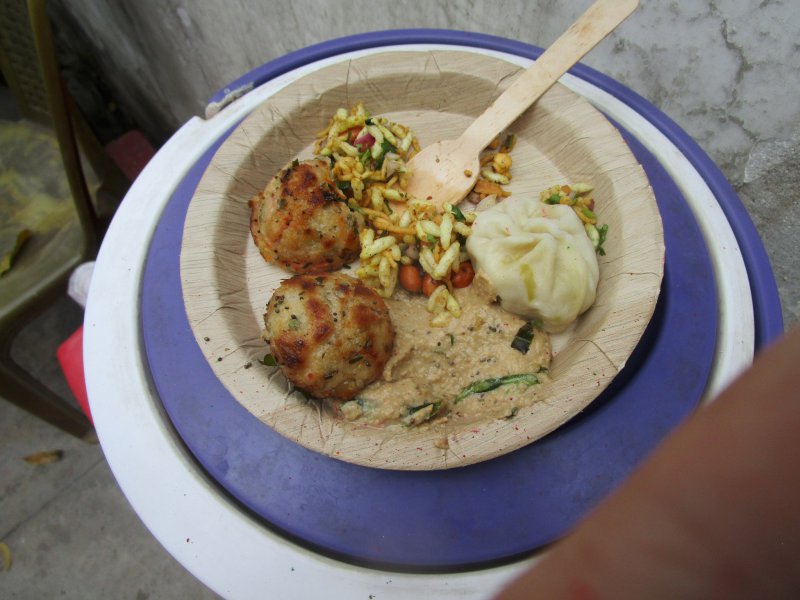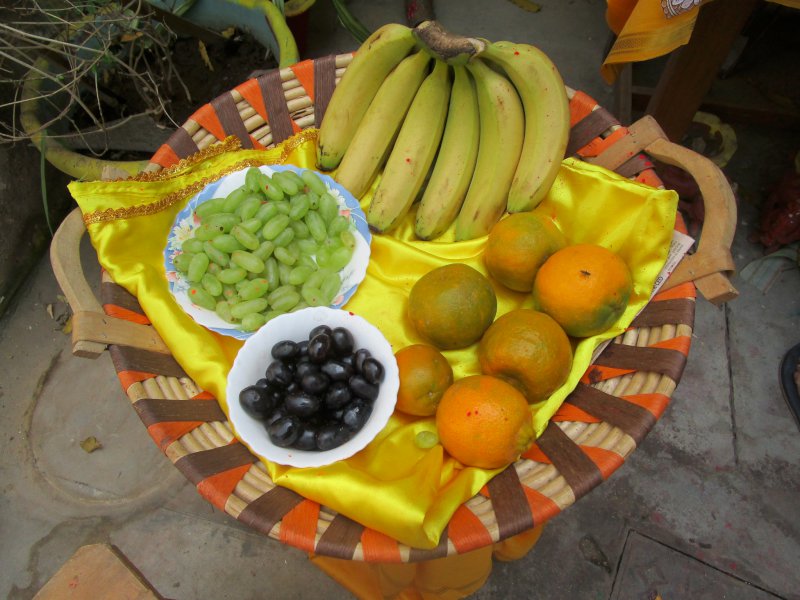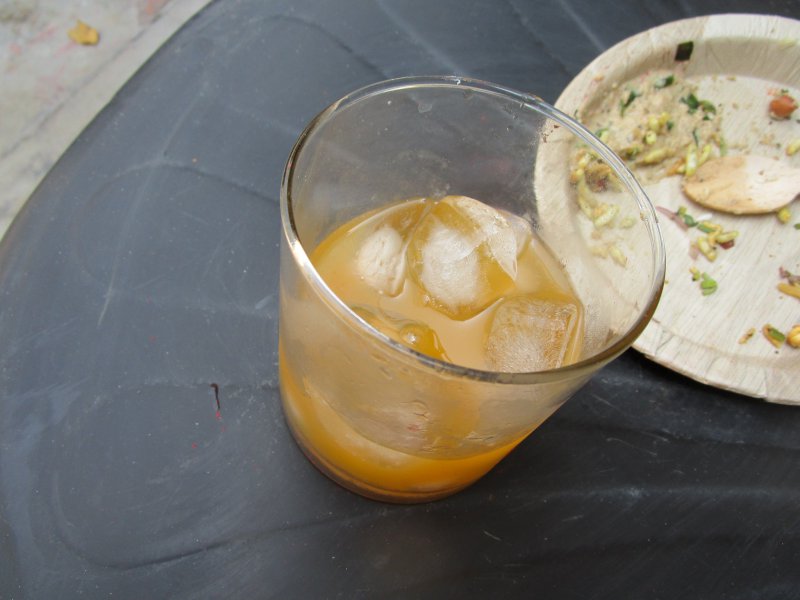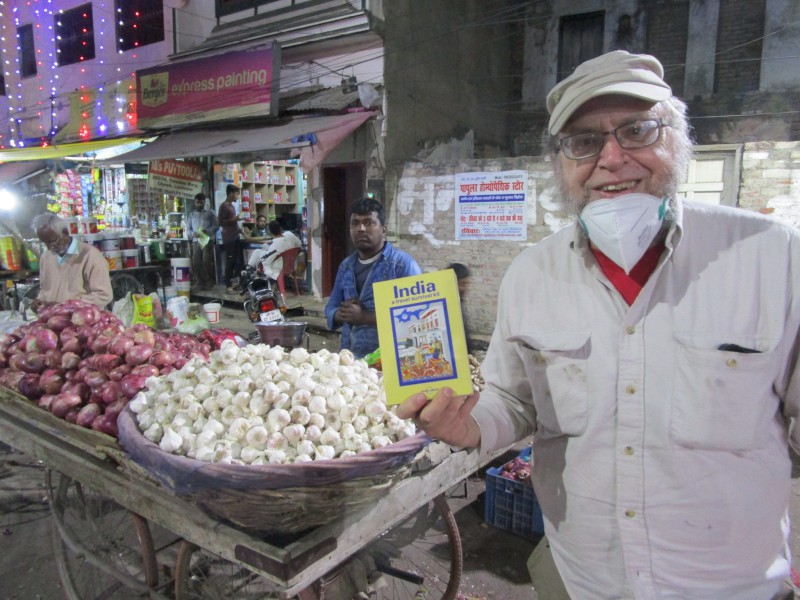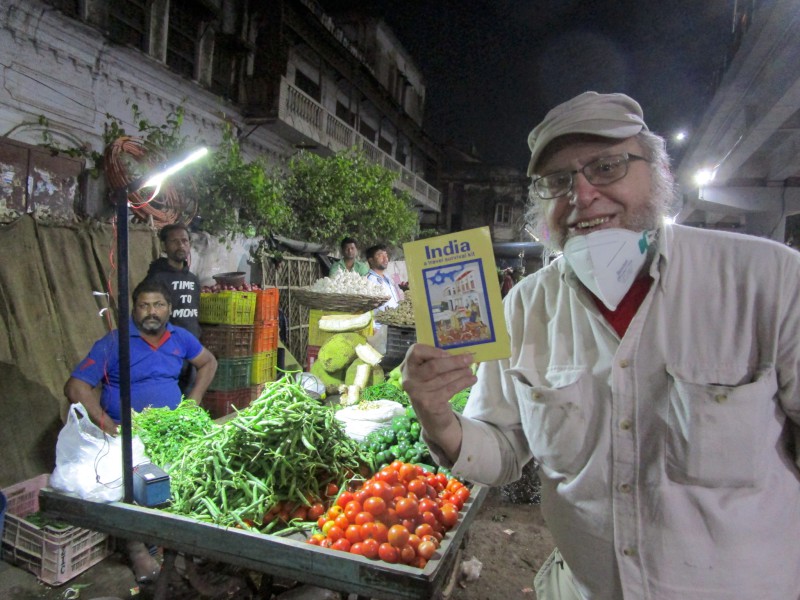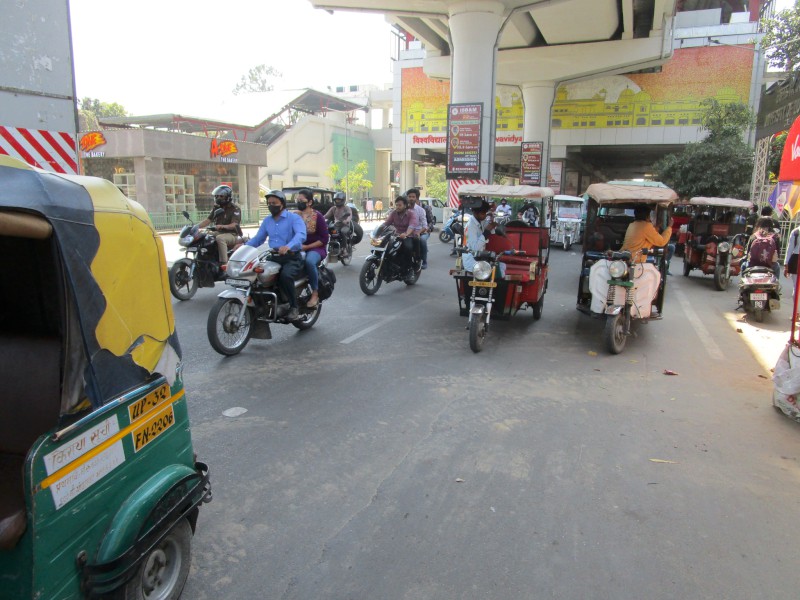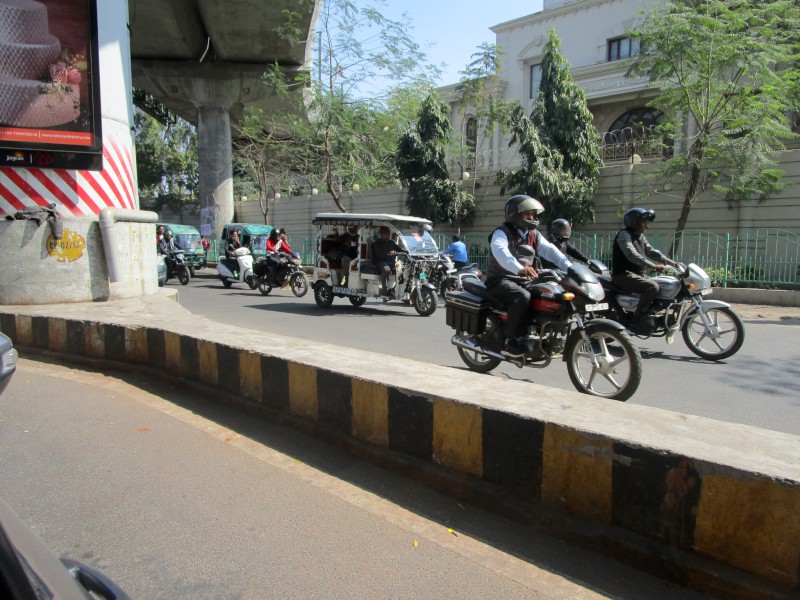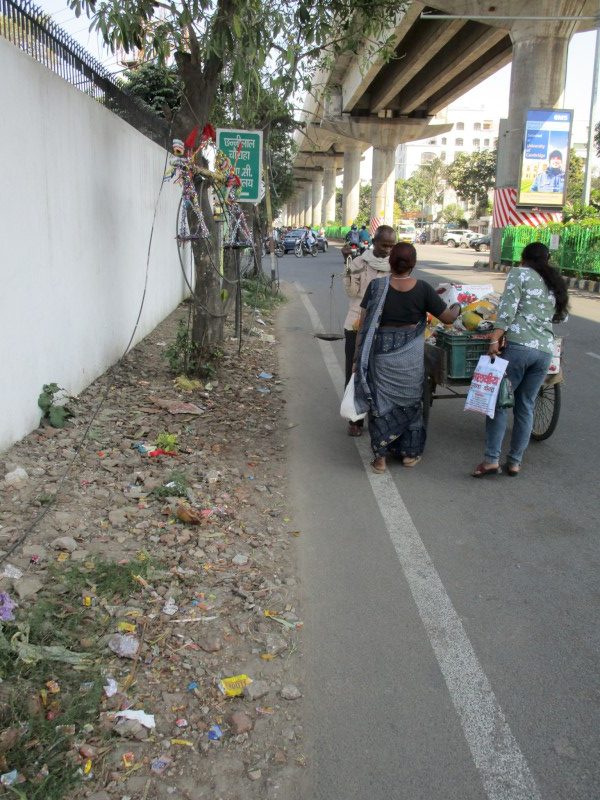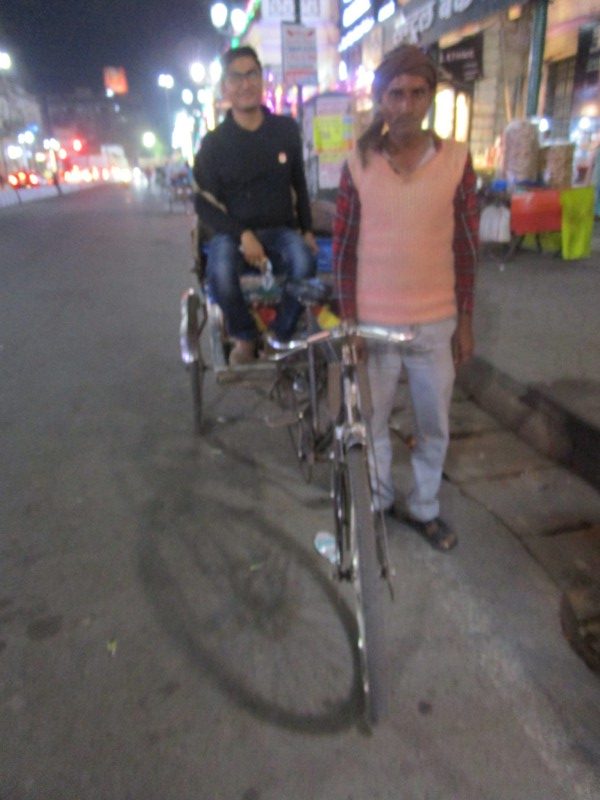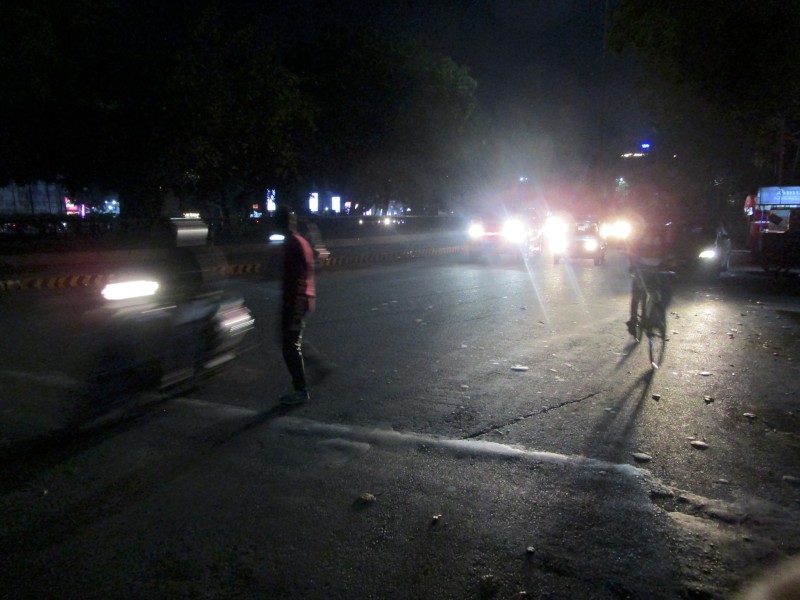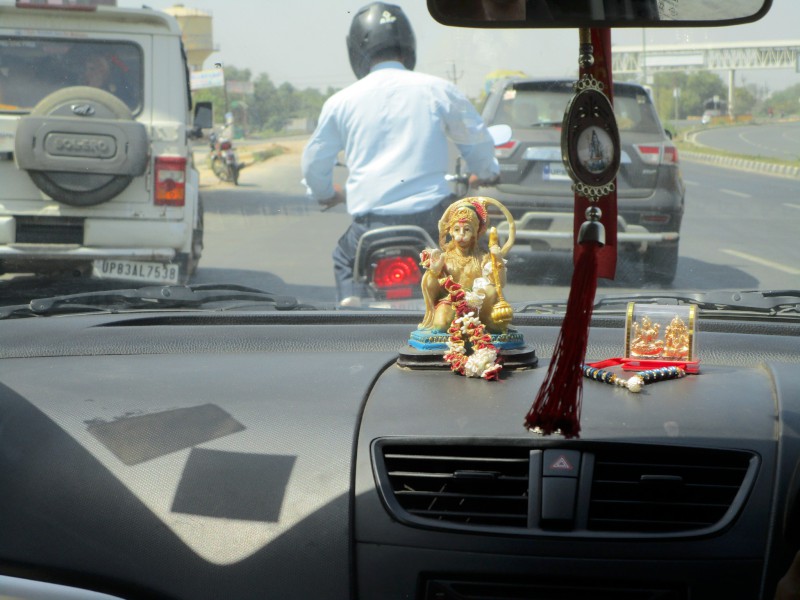
I am here of course for scientific research and do not plan any trips in these covid times but one: the Taj Mahal. I mention this during my first week and my hosts immediately book me a three-day weekend to Agra. I must go now, they say, as it will get too hot too quickly. I take a six-hour train ride to Agra, then a 20 minute cab to the motel. Here is dashboard for the cab. Cab-driver honked the horn almost constantly.
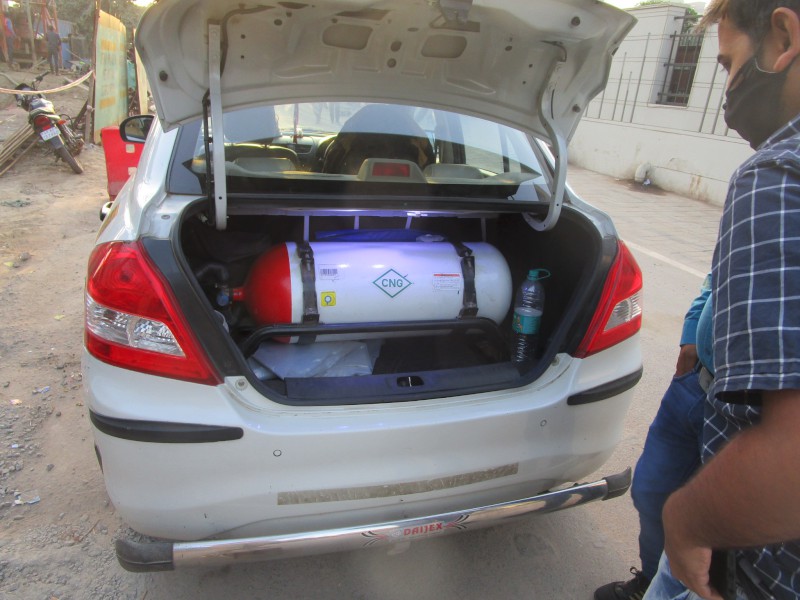
Turns out that the cab is powered by compressed natural gas, which is the first CNG vehicle I have seen since our student trip to Iceland some years ago. This is for my ENERGY class.
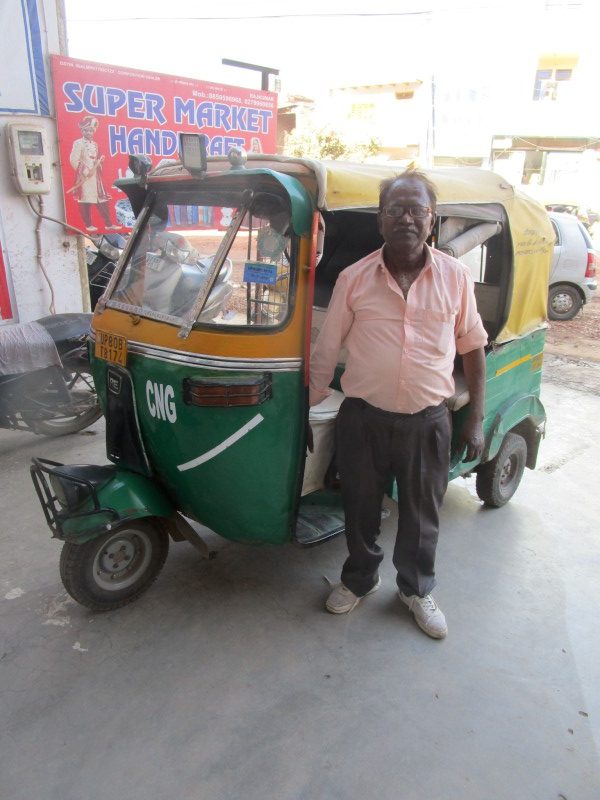
Once we have dropped our stuff off at the motel, we are ready to explore. Upon our exit we are immediately hounded by aggressive people who want to drive us around. We push past this – obnoxious salespeople we do not want – and after a short walk find an older and more professional driver – Netaji.
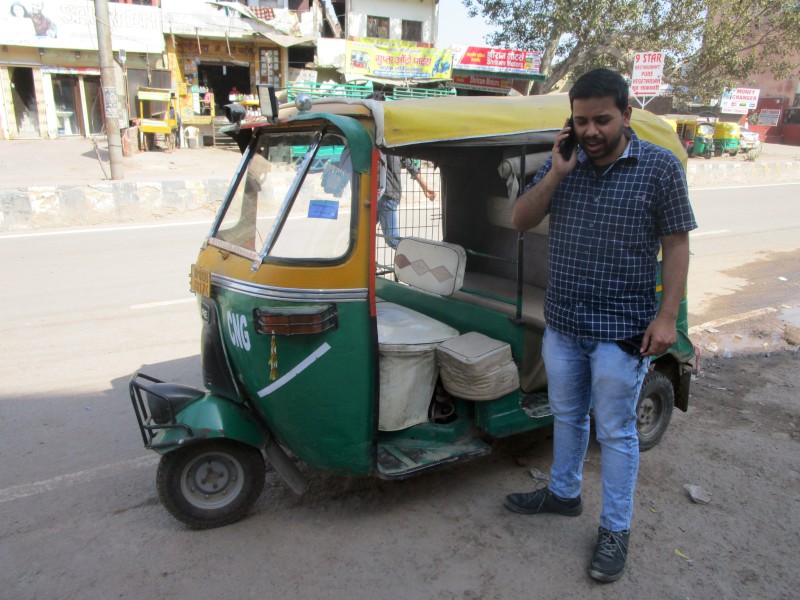
With me is a student from the Birbal Sahni Institute of Paleosciences who is fascilitating my trip. This is Rout. I am fairly adverturous, but frankly, trying to make this trip by myself would be foolhardy, and I much appreciate these two.

First, yet another bit of traffic – cows (and bulls). I have not seen these in Lucknow, but are all over the place in Agra. They always walk like they know where they are going, and no one seems to get in their way.

Our first stop is the “Red” Fort, from the early 1600s. There is a big crowd, and we are literally unable to get through the –again – aggressive people who want to sell us “discount” tickets and take their 1-hour guided tour (me being an obvious foreign makes me something of a target). We retreat back to Netaji, who knows – Nataji knows everyone- a tourist agent who gets us tickets online. We then return, show these to a security guard and just like that, we are inside. No one-hour guided tour for us, we stroll about for a couple of hours.
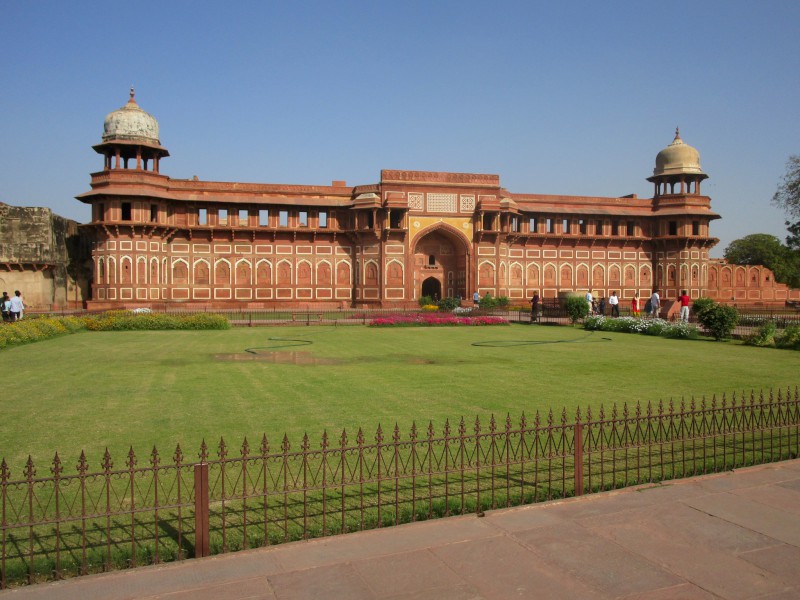
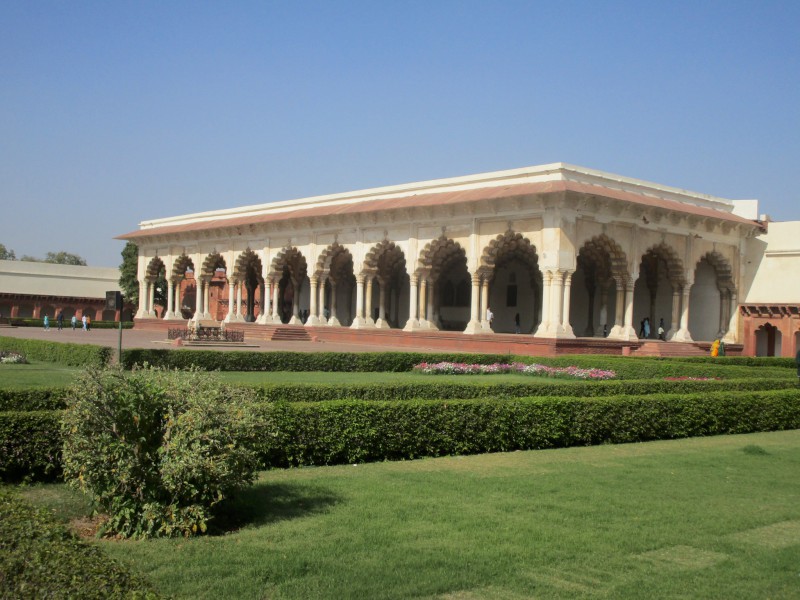
Inside is one large structure after another. This is the private of a Mughul Emporor. Some maintenance and restoration has not doubt happened, but I am amazed that all this has survived with little damage.
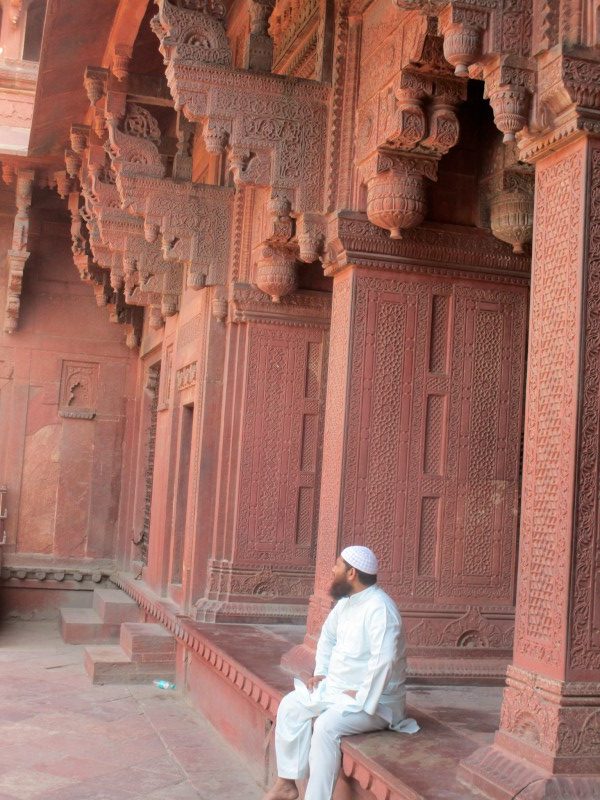
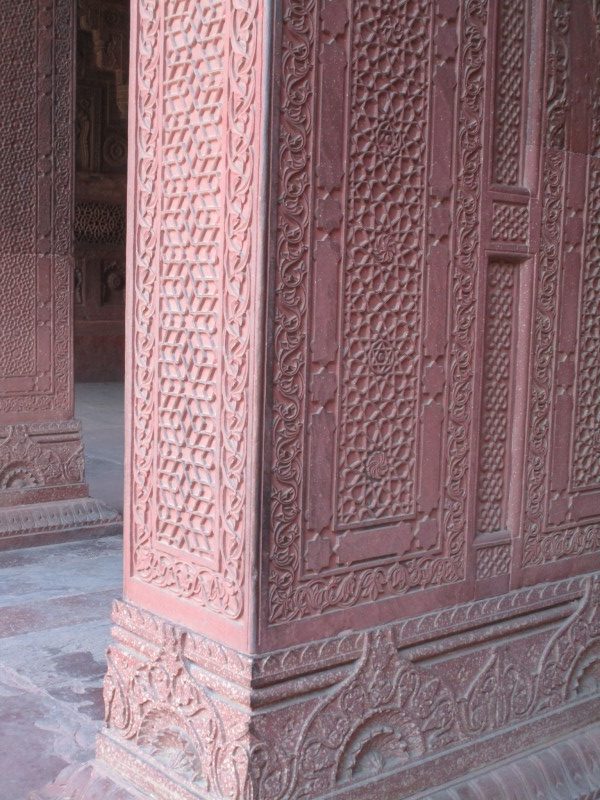
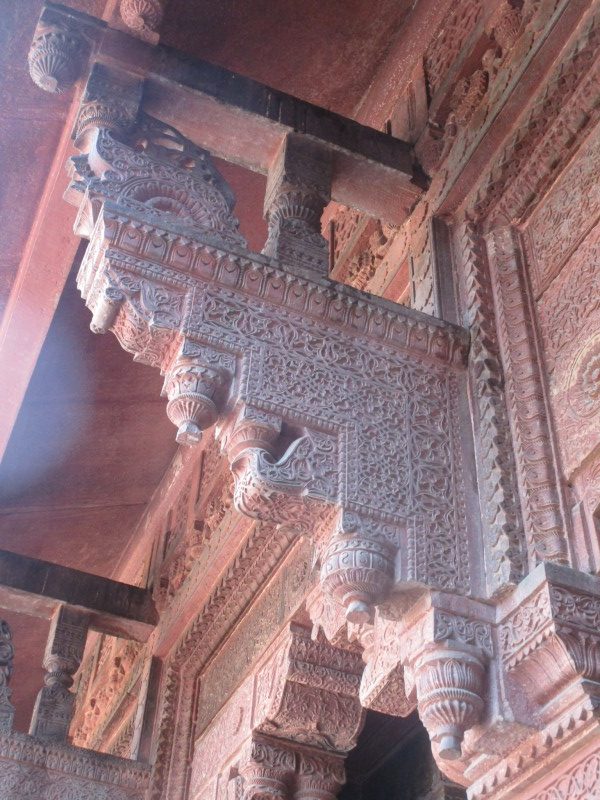
These pictures some of the detail associated with one structure. The Mughuls were moslem, so fancy ornamentation without human figures.

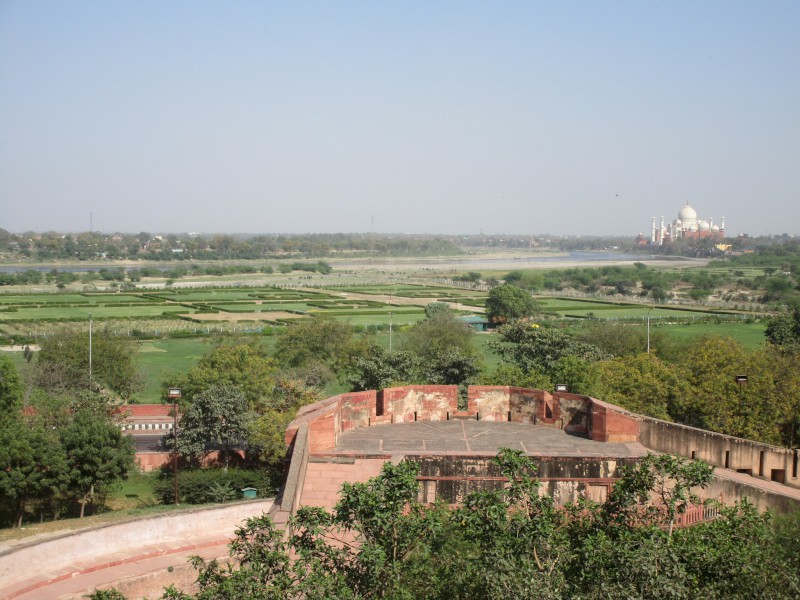
Here is another view, and looking out one of the windows – hey! That is the Taj!

Leaving the fort, Netaji takes us along some back roads to a location where we can see the Taj from the back, across the river. We work our way through an orchard and here is the view. Rout takes this picture – he has a good eye.

Getting closer here is the south bank of the Yamuna River, with the Taj on the other side (and more cows on our side).
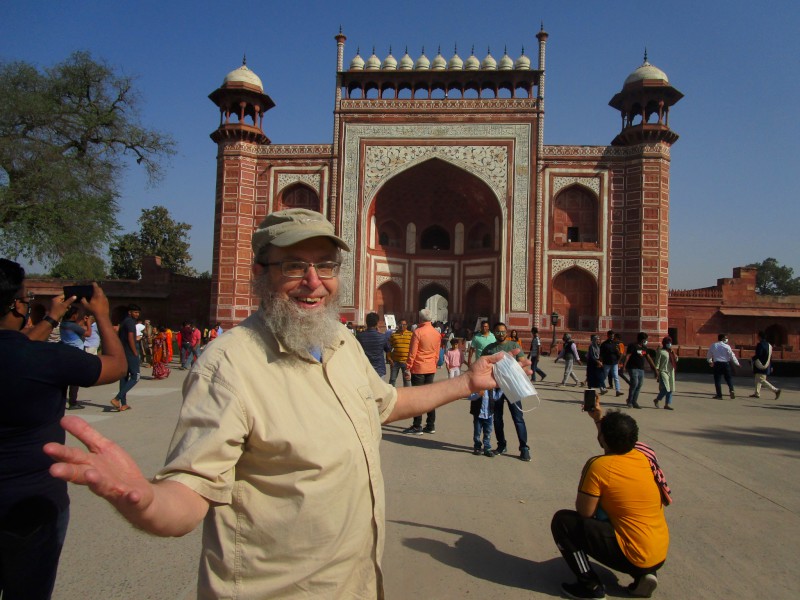
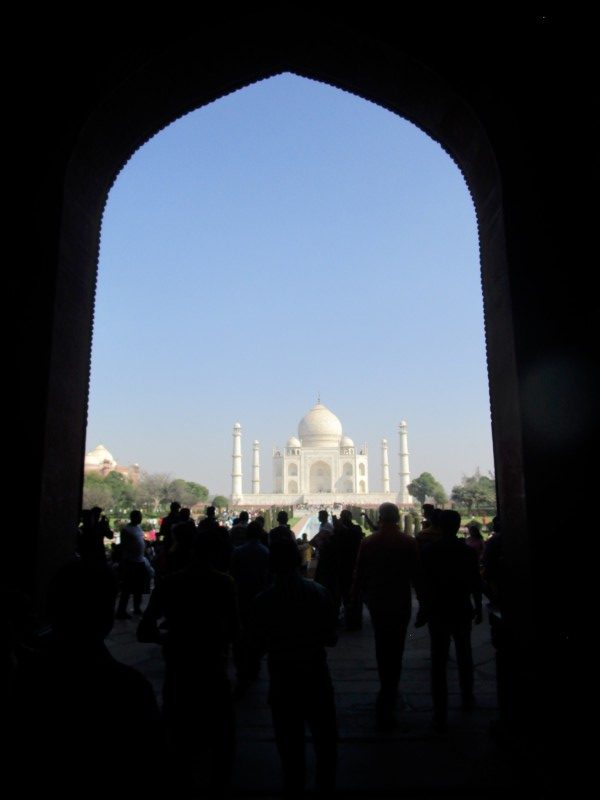
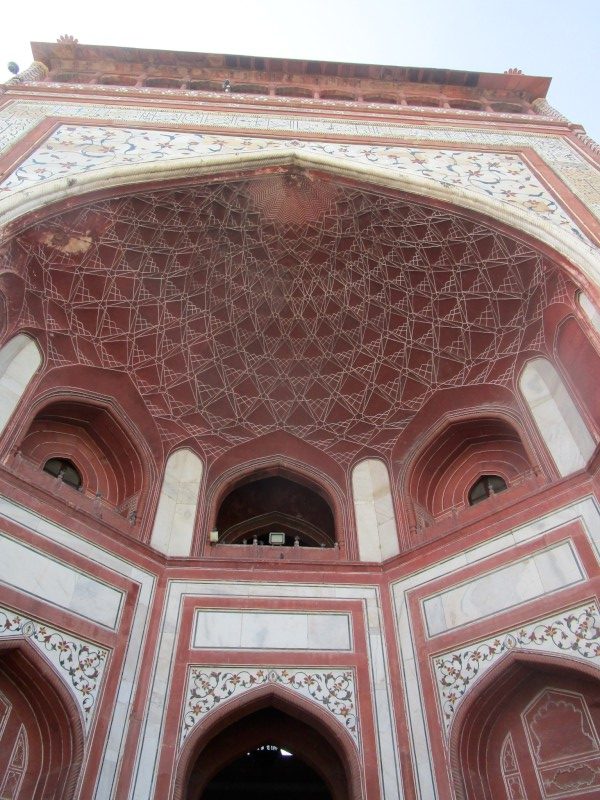
Through that is a large courtyard and another larger gate, and as we approach that we see the Taj. This building and gate are quite large, here is my view of this gate from the other side.
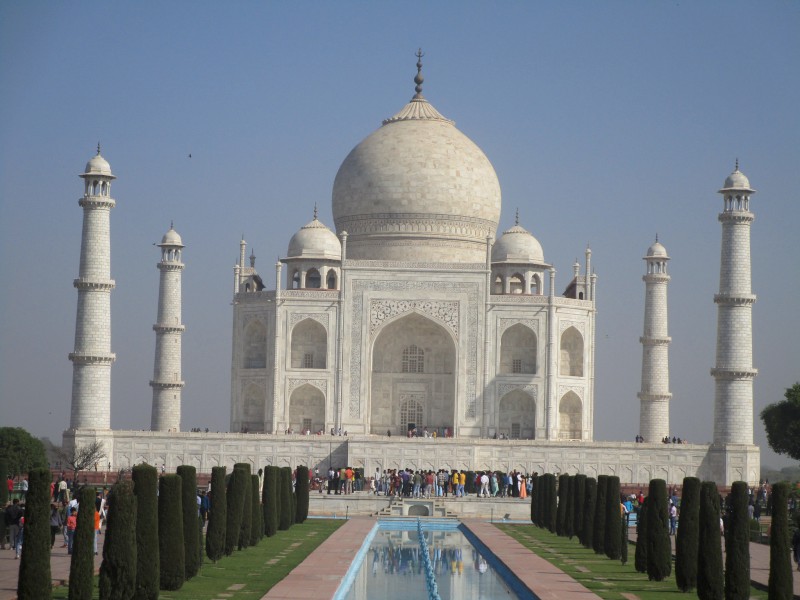
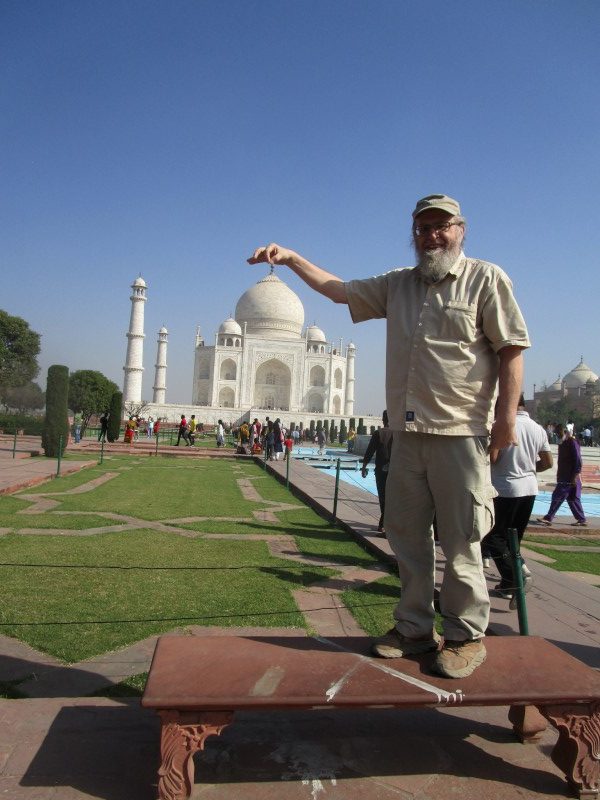
And once I turn around at the same location, here is the view. And here is the picture that everyone seems to be taking.
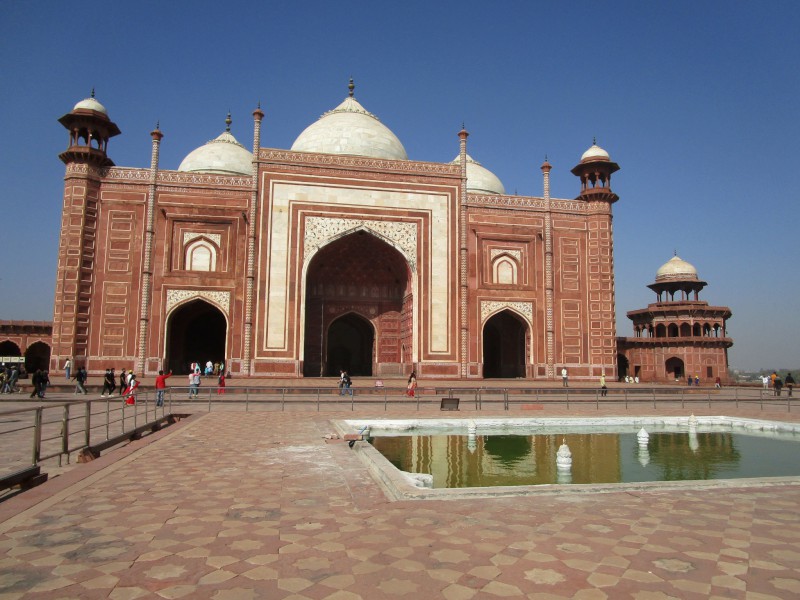
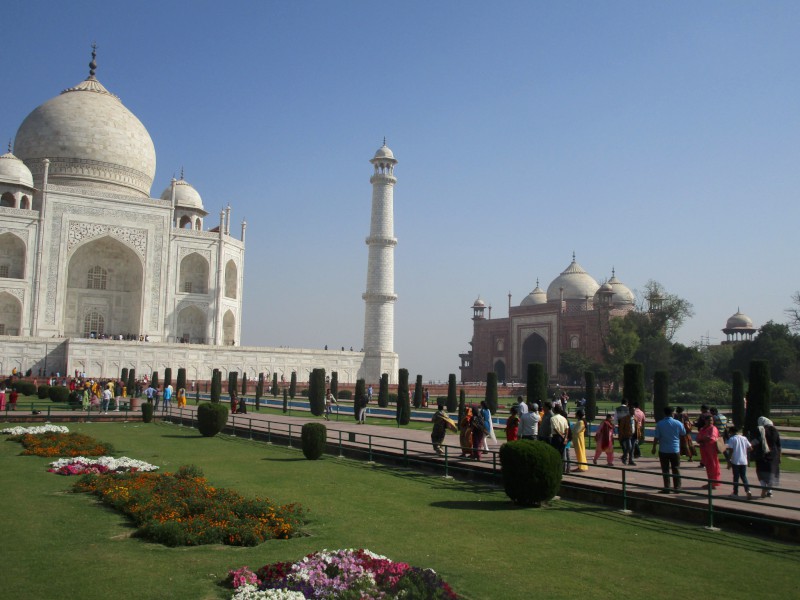
Flanking the Taj Mahal are two large red buildings. To the right is the guesthouse. On the other side is the dining hall.Both are exact mirror images of one another.
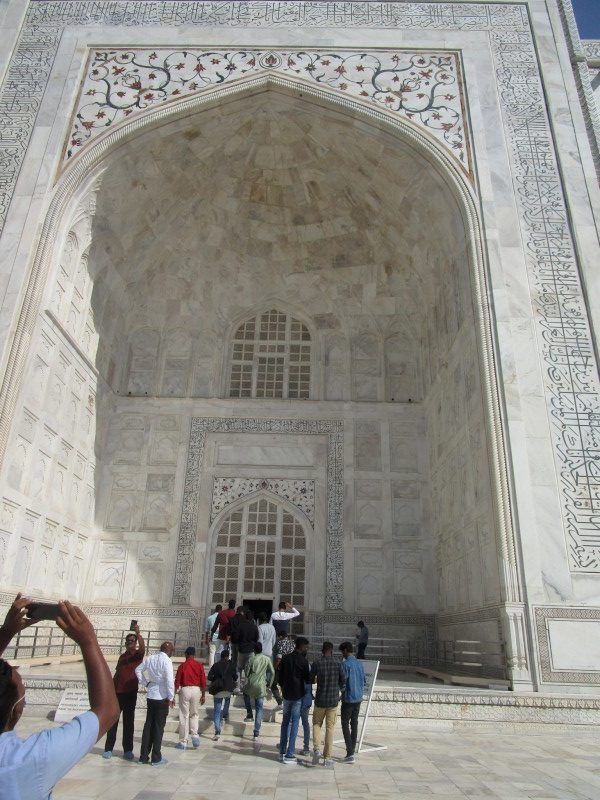
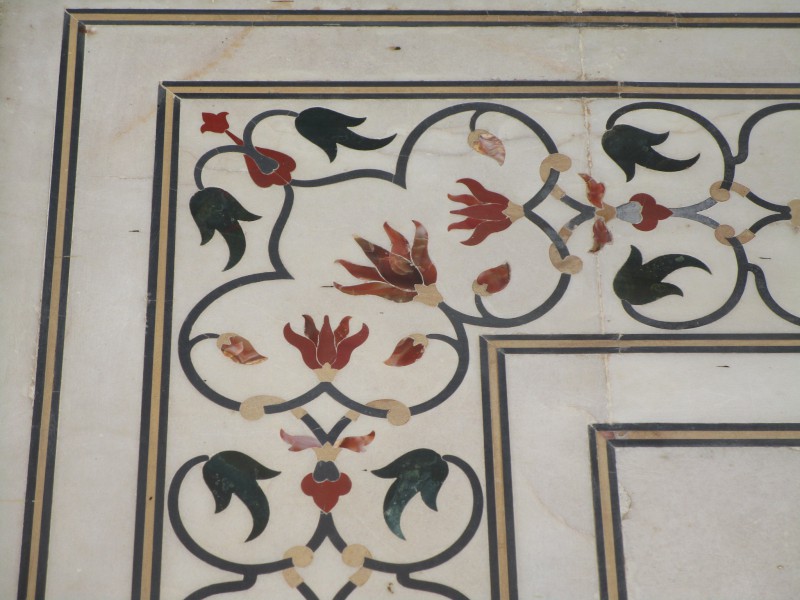
Here is the entrance. Everything here is exactly symmetrical, and without flaw (I am told this by a quilter, and quilters seek out any flaw in another’s work). I have here pictures of the corners to the right and left of the entrance.
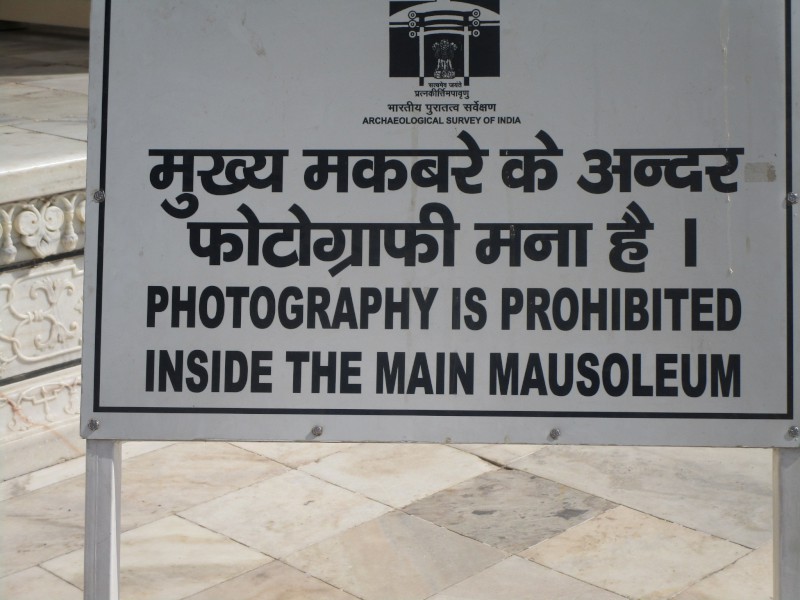
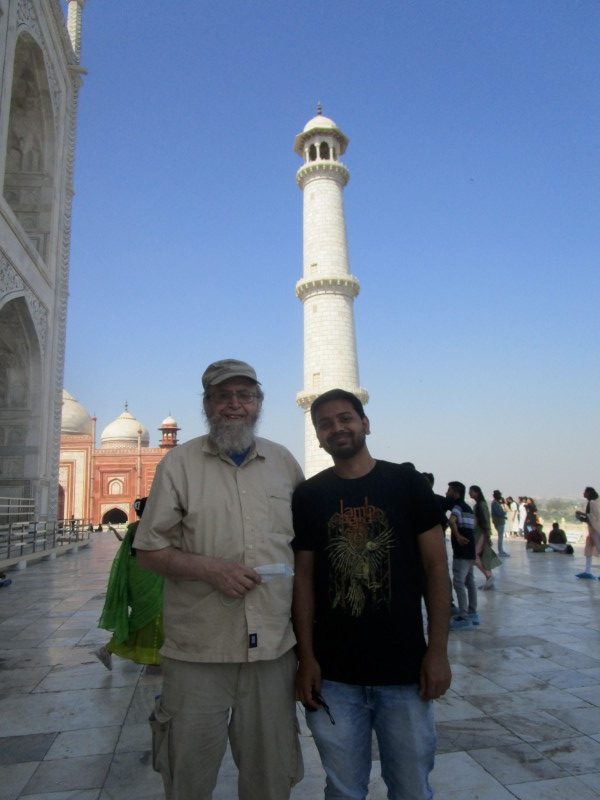
No pictures allowed within, this is after all a burial site. Shah Johan built all this for his wife, who died in childbirth after bearing her 13th child. Her sarcophagus is in the exact center of the area within the Taj. The Shah, 5th in the line of Moghul Emperors, is in a sarcophagus next to her, and is the only violation of the perfect symmetry that surrounds her. And here is Rout and myself on the other side.
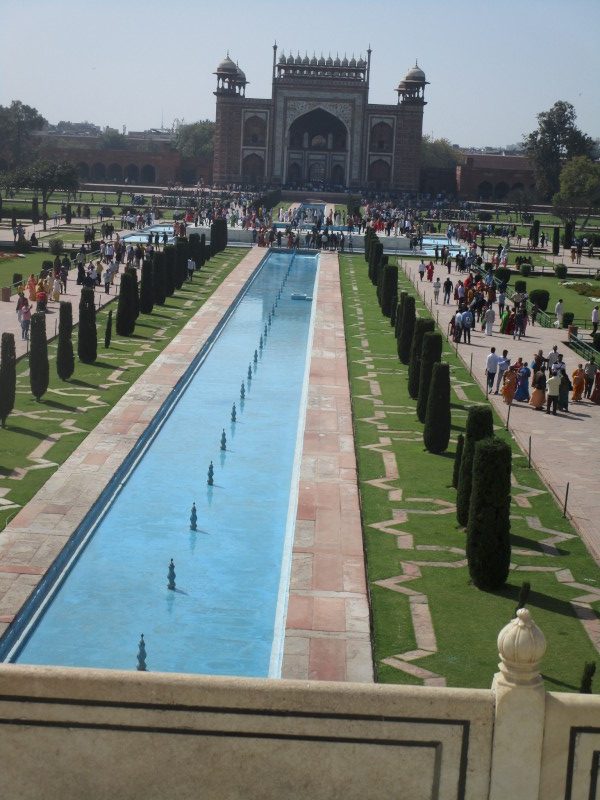
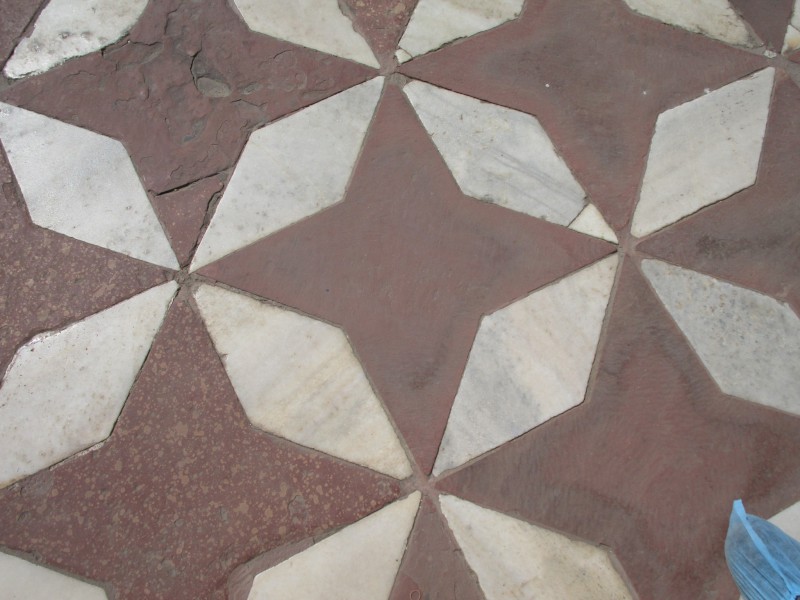
A picture from the Taj directed back at the previous gate. Where I stand, the tiles remind me of … silicoflagellates.
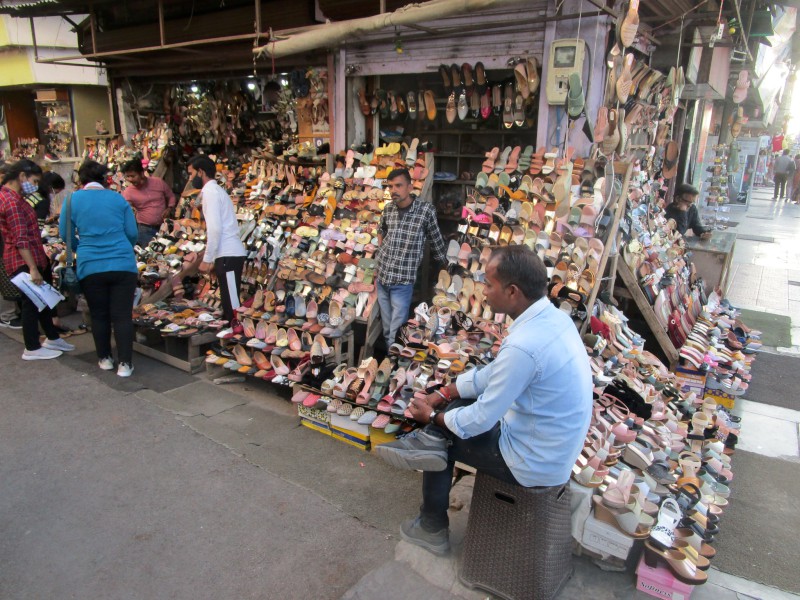
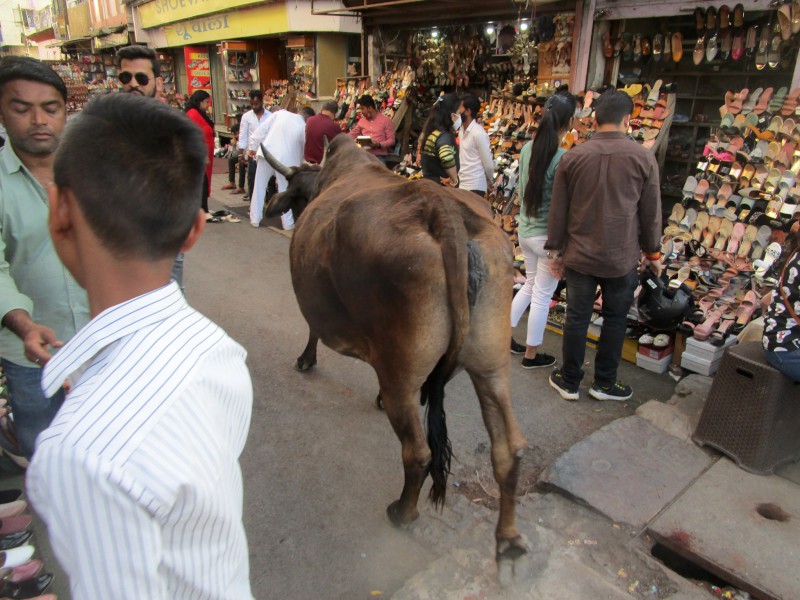
Later, in a busy day, we visit a local market, this is the sort of shoe-district, with many shoe stalls down the alley. Oops, somewhat wants to come through…
